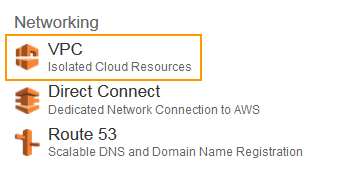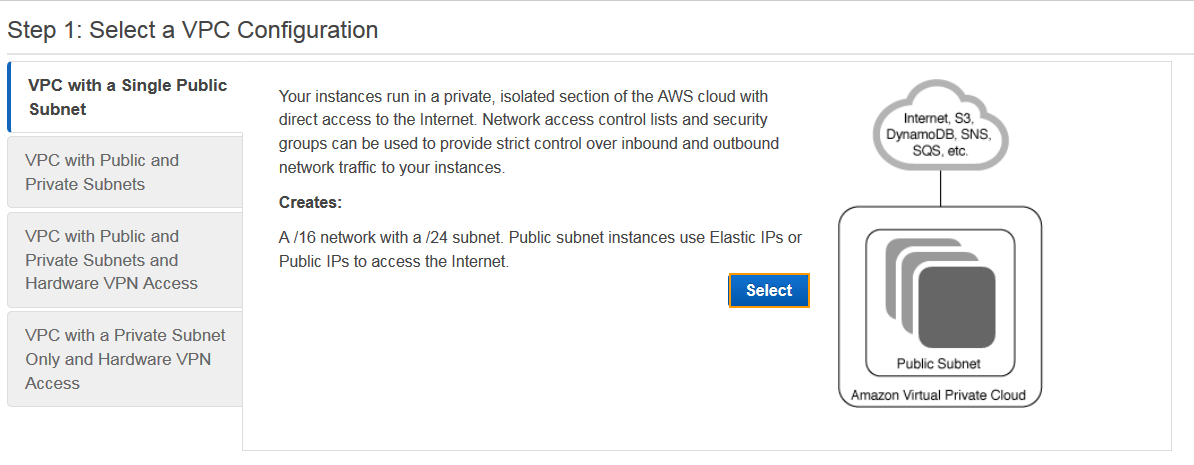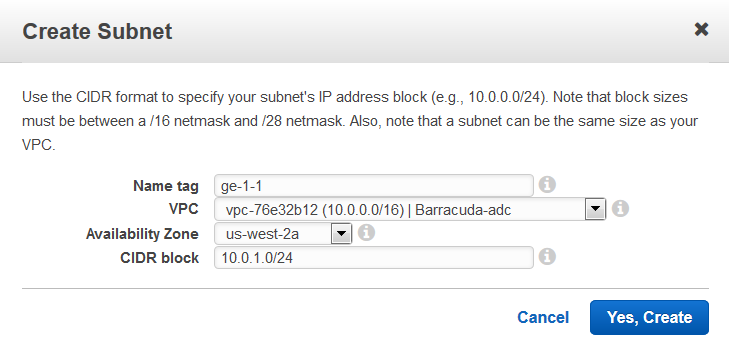To meet a variety of performance requirements, the M1 Medium, M1 Large, and M1 Extra Large instance types are supported for deploying the Barracuda Load Balancer ADC on Amazon Web Services (AWS). Depending on the instance type, you can have:
- Up to 4 vCPUs.
- Up to 15 GB of memory.
- Up to 4 network interfaces. One interface is used for MGMT access and the remaining interfaces can be used for creating services. With multiple network interfaces, you can create a link bond to improve the throughput of the Barracuda Load Balancer ADC.
- Up to 16 private IP addresses per network interface. To ensure that services are available over the Internet, you can allocate a public IP address, or Elastic IP address (EIP), to each private IP address.
The Barracuda Load Balancer ADC is available hourly in the AWS Marketplace or you can bring your own license (BYOL).
Licensing Options
The Barracuda Load Balancer ADC AMI is available on Amazon Web Services with the Hourly/Metered licensing option and the Bring Your Own License (BYOL) option.
Bring Your Own License (BYOL)
With the Bring Your Own License (BYOL) option, you are required to get the Barracuda Load Balancer ADC license token, either by:
- Providing the required information for a free evaluation at https://www.barracuda.com/purchase/evaluation OR
- Purchasing online at https://www.barracuda.com/purchase . From the Product list, select Barracuda Load Balancer ADC AWS under Public Cloud Solutions. Then complete the rest of the form. With this license option, there are no Barracuda Load Balancer ADC Software charges, but Amazon Elastic Compute Cloud (Amazon EC2) usage charges on Amazon are applicable.
BYOL Models and Instance Types
For BYOL, Barracuda Networks offers three models. The following table lists each model and their corresponding instance type to be used in AWS. The table also lists the CPU, memory, and networking capacity for each instance type.
If you want to increase the performance of a license that you have already purchased, you can buy additional cores from Barracuda and reconfigure your VM for a larger instance type.
Barracuda Load Balancer ADC Model | Supported Instance Type in Amazon Web Services | Default vCPU | Default Memory | Maximum Number of Elastic Network Interfaces (ENIs) | Maximum Number of Private IP Addresses per ENI |
|---|---|---|---|---|---|
BBFCAW003a | m3.medium | 1 | 3.75 GB | 2 | 6 |
BBFCAW004a | m3.large | 2 | 7.5 GB | 3 | 10 |
| m4.large | 2 | 8 GB | 2 | 10 | |
BBFCAW006a | m3.xlarge | 4 | 15 GB | 4 | 15 |
| m4.xlarge | 4 | 16 GB | 4 | 15 |
Hourly / Metered
With the Hourly/Metered licensing option, you complete the purchase or evaluation of the Barracuda Load Balancer ADC entirely within the AWS Marketplace. After the instance is launched, it is provisioned automatically. You are charged hourly for both the Barracuda Load Balancer ADC Software and Amazon Elastic Compute Cloud (Amazon EC2) usage on Amazon. For pricing information, refer to the AWS Marketplace.
Hourly/Metered Model and Instance Types
For Hourly / Metered licensing, Barracuda Networks offers only model BBFCAW000p. Three instance types are available for this model. The following table lists each instance type with its CPU, memory, and networking capacity.
If you want to increase the performance of an existing VM, configure it with a larger instance type on AWS and you will be charged accordingly by Amazon. The VM will automatically be reconfigured by Amazon with the resources and capabilities of the larger instance type.
Barracuda Load Balancer ADC Model | Supported Instance Type in Amazon Web Services | Default vCPU | Default Memory | Maximum Number of Elastic Network Interfaces (ENIs) | Maximum Number of Private IP Addresses per ENI |
|---|---|---|---|---|---|
BBFCAW000p | m3.medium | 1 | 3.75 GB | 2 | 6 |
| m3.large | 2 | 7.5 GB | 3 | 10 | |
| m4.large | 2 | 8 GB | 4 | 15 | |
| m3.xlarge | 4 | 15 GB | 4 | 15 | |
| m4.xlarge | 4 | 16 GB | 4 | 15 |
Before You Begin
Before you deploy the Barracuda Load Balance ADC on Amazon Web Services, decide whether you want to purchase it with the Hourly/Metered licensing option or the Bring Your Own License (BYOL) option. Then set up an Amazon Virtual Private Cloud (VPC).
A VPC is an isolated virtual network on the Amazon Web Services (AWS) Cloud where you can launch AWS resources, such as Amazon EC2 instances. When you set up a VPC, specify IP addresses in the form of Classless Inter-Domain Routing (CIDR) blocks (for example, 10.0.0.0/16). In a VPC, you can select your own IP address range, create subnets, and configure routing tables and network gateways.
For more information about CIDR notation, refer to Classless Inter-Domain Routing on Wikipedia. For information about the number of VPCs that you can create, refer to the AWS article Amazon VPC Limits.
To set up a VPC, complete the following steps. If you have already configured a VPC for the Barracuda Load Balancer ADC, you can skip ahead to the Barracuda Load Balancer ADC Deployment and Quick Start Guide for Amazon Web Services .
Step 1. Create the Amazon VPC Cloud
- Go to the AWS Management Console.
- In the Networking section, click VPC.

- On the VPC Dashboard, click Start VPC Wizard.

- On the Step 1: Select a VPC Configuration page:
- Select VPC with a Single Public Subnet.
- Click Select.

- On the Step 2: VPC with a Single Public Subnet page, do the following:
- Enter an IP address for the VPC in the IP CIDR block field. It is recommend that you specify a CIDR block from the private (non-publicly routable) IP address ranges as specified in RFC 1918; for example, 10.0.0.0/16.
- Enter a name for the VPC in the VPC name field. Example: Barracuda-adc
- Enter an IP address for the subnet in the Public subnet field. For example: 10.0.0.0/24
- Select the availability zone for the VPC from the Availability Zone drop-down list.
- Enter a name for the subnet in the Subnet name field.
- Keep the default values for other parameters and click Create VPC.

.
Step 2. Add a Subnet to the VPC
Perform the following steps to add a subnet to your VPC:
- From the VPC Dashboard, select Subnets under Virtual Private Clouds.
- Click Create Subnet.
- In the Create Subnet window, do the following:
- Specify a name for the subnet in the Name tag field. Example: ge-1-1
- Select the VPC created in Step 1. Create a Virtual Private Cloud (VPC) from the VPC drop-down list.
- Select the availability zone that your VPC resides from the Availability Zone drop-down list.
- Specify the IP address(es) in the CIDR Block field.
- Click Yes, Create.

Next Step
Now that you have set up a VPC for the Barracuda Load Balancer ADC, you can continue with the Barracuda Load Balancer ADC Deployment and Quick Start Guide for Amazon Web Services.
